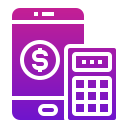Best Practices for Implementing Cloud in Managerial Accounting
Chosen theme: Best Practices for Implementing Cloud in Managerial Accounting. Welcome to a practical, story-driven guide for finance leaders using the cloud to improve planning, cost visibility, and decision support. Expect real examples, clear steps, and gentle nudges to take action. If this resonates, subscribe and share your priorities so we can tailor future topics.

Define Decision-Useful Outcomes First
Anchor the cloud initiative in measurable outcomes: faster variance analysis cycles, improved forecast accuracy, and clearer cost-to-serve visibility. Translate each outcome into a specific KPI and baseline. When everyone agrees on success upfront, technology becomes a lever, not a distraction—tell us which KPI matters most in your function.
Establish Governance with Finance at the Table
Create a steering group with the CFO, controller, FP&A lead, and data platform owner. Set monthly value reviews, quarterly roadmap checks, and a living backlog tied to business outcomes. When finance co-owns priorities, adoption accelerates. Comment with your ideal governance cadence and why it works for you.
Tell a Compelling Value Narrative
Craft a narrative that links cloud capabilities to tangible wins: fewer manual reconciliations, faster scenario modeling, and clearer margin insights. Use before-and-after stories and customer quotes to build momentum. Share your one-sentence value story—concise, memorable, and powerful for stakeholders and teams.
Design a Cloud Data Foundation for Cost and Profitability
Model Cost Drivers and Dimensions
Define a standardized model containing cost centers, products, customers, channels, and geographies. Encode drivers for activity-based or time-driven costing, including labor hours, machine time, and order complexity. This structure enables granular profitability and confident drill-downs across scenarios and periods, strengthening strategic and operational decision-making.


Role-Based Access and Least Privilege
Implement role-based and attribute-based access so users see only what they need, aligned with segregation-of-duties principles. Use just-in-time privileged access and periodic reviews. Finance leads should co-approve access profiles, ensuring sensitive cost and margin views are right-sized without slowing legitimate analysis or collaboration.

Audit Trails and Continuous Monitoring
Turn on immutable logging for data changes, model updates, and report deployments. Automate alerting around anomalous access, failed pipelines, and policy deviations. Align with SOX and ISO 27001 practices. Continuous monitoring not only protects operations, it reassures auditors and boards that the cloud environment is resilient and well-governed.
Tagging and Chargeback That Mirrors Your P&L
Standardize resource tags for cost centers, products, projects, and environments. Align chargeback to your managerial accounting structure so teams see cause-and-effect. One SaaS firm reduced cloud waste by 22% after aligning tags to product margin reports, making optimization conversations constructive rather than contentious across departments.
TCO, ROI, and Unit Economics
Evaluate total cost of ownership, including platform fees, data egress, support, and training. Express value with unit economics—cost per forecast iteration, report refresh, or transaction processed. This reframes spend as investment. Share your favorite unit metric and we’ll compile a community-driven benchmarking list for subscribers.
Right-Sizing, Reservations, and Scheduling
Automate instance right-sizing, apply savings plans or reservations for steady workloads, and schedule non-production environments to sleep off-hours. Pair engineering telemetry with finance visibility to validate savings. Celebrate small wins publicly—visible savings reinforce healthy habits and keep cross-functional teams engaged and motivated.
Operational Excellence: Agile Delivery and Adoption
Deliver in Sprints with Finance-Led Priorities
Run two-to-four-week sprints with a backlog owned jointly by finance and data teams. Demo working dashboards and models every cycle, capturing feedback on clarity and usefulness. This rhythm reduces rework, boosts trust, and ensures each release advances managerial accounting outcomes measurably and transparently across stakeholders.
Upskill Accountants on Cloud Tools
Offer role-based learning paths: data literacy for all, modeling for FP&A, and advanced visualization for power users. Use learning circles and paired analytics to accelerate practical skills. When accountants can explore scenarios themselves, adoption soars and the cloud stops feeling like someone else’s platform or responsibility.
Celebrate Wins and Manage Resistance
A skeptical plant controller became an advocate after seeing a five-minute scrap-cost dashboard replace weekly spreadsheets. Sharing early wins reduces resistance and humanizes change. Invite skeptics to co-design; ownership rewires attitudes. Tell us your favorite small win—those stories inspire others to try the next step confidently.
Real-Time Insight: Planning, Analytics, and Scenarios
Implement driver-based models for volume, price, and mix with elastic compute for quick recalculations. Replace long monthly cycles with rolling forecasts updated as new data arrives. Finance gains time to advise, not reconcile. Share which drivers move your business most so we can suggest practical sensitivity ranges.

